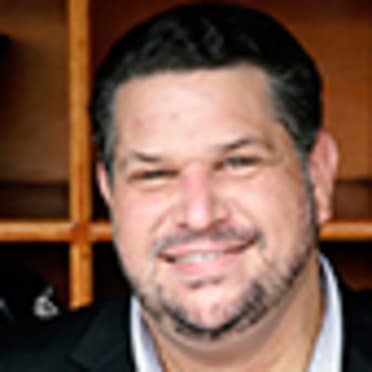After the MLB Players Association suggested in a statement that the latest rules changes – specifically relating to the pitch timer – were to blame for the recent rash of pitching injuries, Major League Baseball responded with a statement of its own Saturday night.
“This statement [from the MLBPA] ignores the empirical evidence and much more significant long-term trend, over multiple decades, of velocity and spin increases that are highly correlated with arm injuries,” the league said. “Nobody wants to see pitchers get hurt in this game, which is why MLB is currently undergoing a significant comprehensive research study into the causes of this long-term increase, interviewing prominent medical experts across baseball which to date has been consistent with an independent analysis by Johns Hopkins University that found no evidence to support that the introduction of the pitch clock has increased injuries.
“In fact, JHU found no evidence that pitchers who worked quickly in 2023 were more likely to sustain an injury than those who worked less quickly on average. JHU also found no evidence that pitchers who sped up their pace were more likely to sustain an injury than those who did not.”
As outlined earlier this week in a piece in The Ringer, the rate of professional pitchers undergoing Tommy John surgery has been on a steady climb for years, a trend that began long before the implementation of the pitch timer. Average game time increased 14 minutes from the late '90s to 2021 and 2022, while pitcher injuries skyrocketed from a combined 11,668 IL days in 1995-1999 to 31,558 IL days in 2023.
Even with the introduction of the pitch timer in 2023, IL placements were down relative to 2022, while average fastball velocity increased, and the rise from 2022 to 2023 was greater than the increase from 2021 to 2022.
In speaking to MLB.com’s Anthony Castrovince recently upon his retirement, surgeon Dr. James Andrews said the rash of elbow injuries can be traced back to amateur baseball.
“I started following the injury patterns and injury rates in the year 2000,” said Andrews. “Back in those days, I did about eight or nine Tommy Johns per year in high school aged and younger. The large majority of Tommy Johns were at the Major League level, then the Minor League level, then the college level and then just a handful of high school kids.
“In today’s situation, the whole thing is flip-flopped. The largest number is youth baseball. They’ve surpassed what’s being done in the Major Leagues. That’s a terrible situation.”
Andrews believes the obsession with velocity and spin at the youth level is the biggest culprit.
“These kids are throwing 90 mph their junior year of high school,” he says. “The ligament itself can’t withstand that kind of force. We’ve learned in our research lab that baseball is a developmental sport. The Tommy John ligament matures at about age 26. In high school, the red line where the forces go beyond the tensile properties of the ligament is about 80 mph.”
The MLBPA’s statement came on the heels of the news that Guardians right-hander Shane Bieber would undergo Tommy John surgery, while Braves righty Spencer Strider also suffered damage to his ulnar collateral ligament, though he will be evaluated by a specialist before deciding on the next step. The Marlins announced earlier this week that right-hander Eury Pérez would also undergo Tommy John surgery.
“Despite unanimous Player opposition and significant concerns regarding health and safety, the Commissioner’s Office reduced the length of the Pitch Clock last December, just one season removed from imposing the most significant rule change in decades,” MLBPA executive director Tony Clark said in a statement. “Since then, our concerns about the health impacts of reduced recovery time have only intensified. The league’s unwillingness thus far to acknowledge or study the effects of these profound changes is an unprecedented threat to our game and its most valuable asset — the Players.”
The pitch timer was introduced for the 2023 season, giving pitchers 15 seconds to throw a pitch with no runners on base and 20 seconds with runners on. The league’s competition committee instituted a change for 2024, shortening the time with runners on base to 18 seconds.
